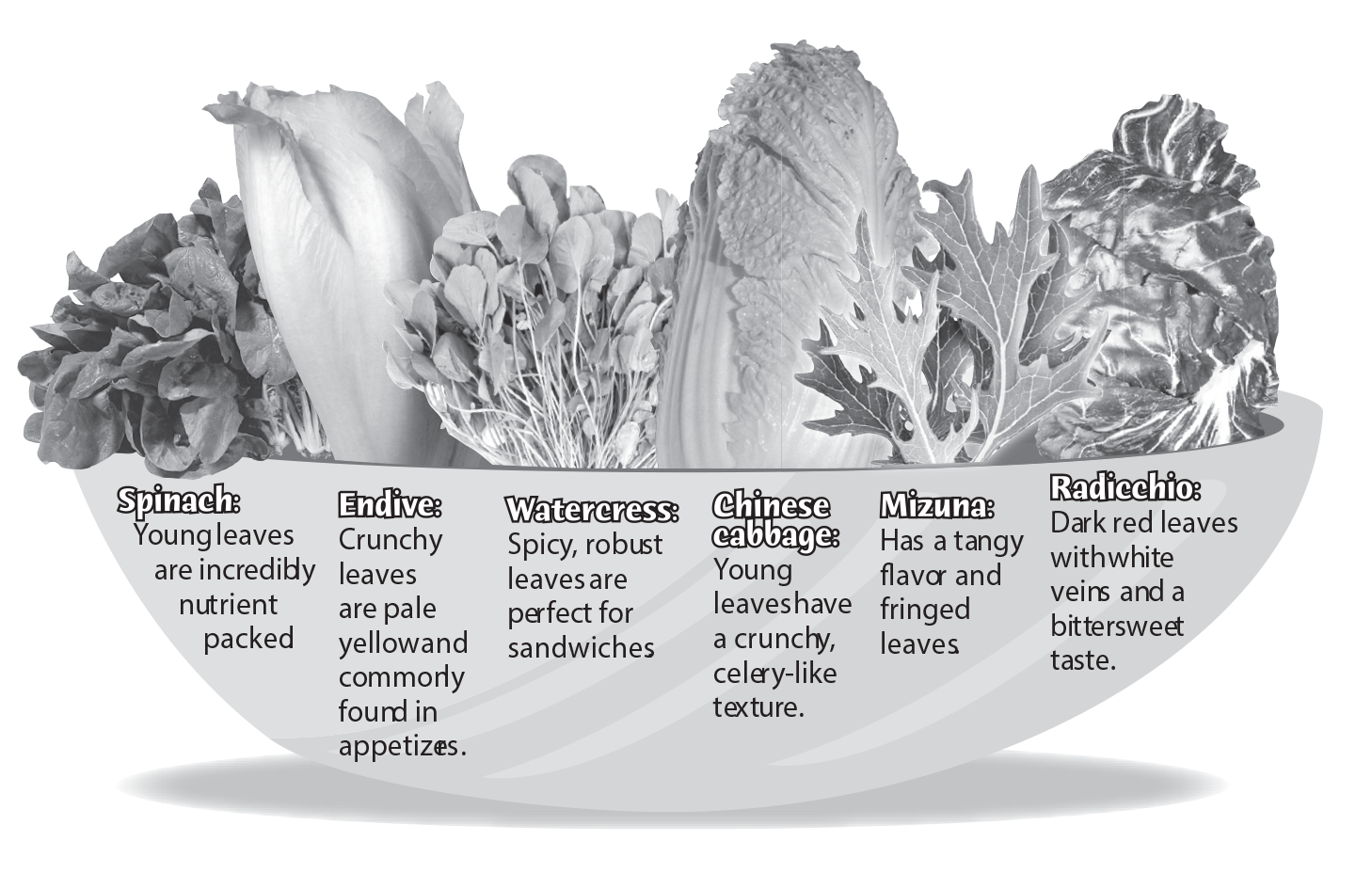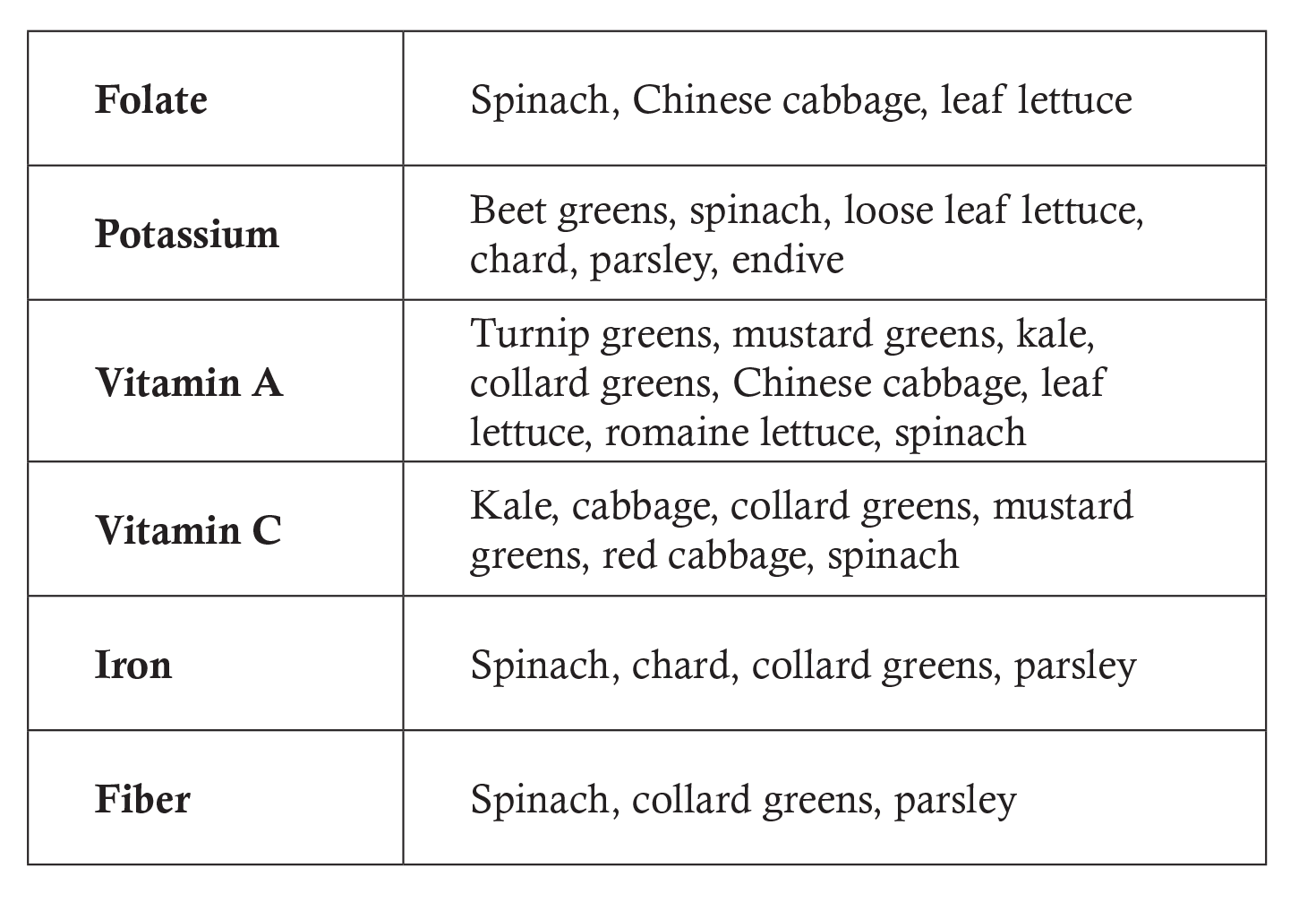Luscious Leaves
Students examine the functions of plant leaves and identify leaves as edible parts of some plants.
Background
Lesson Activities
Recommended Companion Resources
Credits
Author
Shaney Emerson and Michelle Risso | California Foundation for Agriculture in the Classroom
Acknowledgements
This lesson update was funded by a grant from the Network for a Healthy California.
Executive Director: Judy Culbertson
Illustrator: Erik Davison
Layout & Design: Nina Danner
Copy Editor: Leah Rosasco
Standards
Texas Content Area Standards
-
ELA: 3.110.5.b.7
Response skills: listening, speaking, reading, writing, and thinking using multiple texts. The student responds to an increasingly challenging variety of sources that are read, heard, or viewed.
- ELA: 3.7.F: The student is expected to respond using newly acquired vocabulary as appropriate.
-
ELA: 4.110.6.b.1
Developing and sustaining foundational language skills: listening, speaking, discussion, and thinking- oral language. The students develops oral language through listening, speaking, and discussion.
- ELA: 4.1.D: The student is expected to work collaboratively with other to develop a plan of shared responsibilities.
-
ELA: 4.110.6.b.7
Response skills: listening, speaking, reading, writing, and thinking using multiple texts. The student responds to an increasingly challenging variety of sources that are read, heard, or viewed.
- ELA: 4.7.F: The student is expected to respond using newly acquired vocabulary as appropriate.
-
ELA: 5.110.7.b.1
Developing and sustaining foundational language skills: listening, speaking, discussion, and thinking- oral language. The students develops oral language through listening, speaking, and discussion.
- ELA: 5.1.D: The student is expected to work collaboratively with others to develop a plan of shared responsibilities.
-
ELA: 5.110.7.b.7
Response skills: listening, speaking, reading, writing, and thinking using multiple texts. The student responds to an increasingly challenging variety of sources that are read, heard, or viewed.
- ELA: 5.7.F: The student is expected to respond using newly acquired vocabulary as appropriate.
-
Social Studies: 3.113.14.c.4
Geography. The student understands the concepts of location, distance, and direction on maps and globes. The student is expected to:
- Social Studies: 3.113.14.c.14.D: interpret and create visuals, including graphs, charts, tables, timelines, illustrations, and maps
-
Math: 3.111.5.b.8
Data analysis. The student applies mathematical process standards to solve problems by collecting, organizing, displaying, and interpreting data.
- Math: 3.8.A: The student is expected to summarize a data set with multiple categories using a frequency table, dot plot, pictograph, or bar graph with scaled intervals.
-
Social Studies: 3.113.14.c.15
Social studies skills. The student communicates in written, oral, and visual forms. The student is expected to:
- Social Studies: 3.113.14.c.15.D: express ideas orally based on knowledge and experiences
-
Social Studies: 4.113.15.c.19
Social studies skills. The student applies critical-thinking skills to organize and use information acquired from a variety of valid sources, including technology. The student is expected to:
- Social Studies: 4.113.15.c.19.D: organize and interpret information in outlines, reports, databases, and visuals, including graphs, charts, timelines, and maps
-
Social Studies: 4.113.15.c.21
Social studies skills. The student communicates in written, oral, and visual forms. The student is expected to:
- Social Studies: 4.113.15.c.21.C: express ideas orally based on research and experiences
-
Social Studies: 5.113.16.c.23
Social studies skills. The student applies critical-thinking skills to organize and use information acquired from a variety of valid sources, including technology. The student is expected to:
- Social Studies: 5.113.16.c.23.D: organize and interpret information in outlines, reports, databases, and visuals, including graphs, charts, timelines, and maps
-
Social Studies: 5.113.16.c.25
Social studies skills. The student communicates in written, oral, and visual forms. The student is expected to:
- Social Studies: 5.113.16.c.25.C: express ideas orally based on research and experiences


